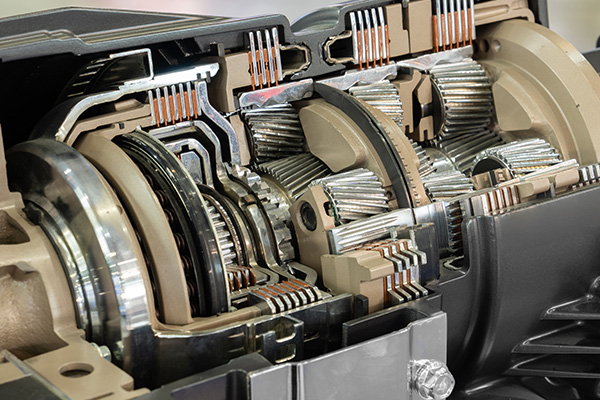
A healthy transmission should shift smoothly, hold gears without slipping, and respond the same way every day. When things start to feel off, the warning signs are usually small at first. You might notice a delayed engagement when shifting from park to drive, a flare in engine speed between gears, or a new sound that was not there last month.
Catching these clues early keeps repair costs down and helps you avoid a tow. Here are five problems we often see, how they show up, and what you can do about them before they turn into major work.
1. Delayed Engagement After Selecting Drive or Reverse
You move the shifter, a second passes, then the vehicle finally moves. That delay is your first hint of low line pressure or an internal seal that is not holding pressure like it should. Cold mornings make this more noticeable because fluid is thicker. If the delay grows longer over a few weeks, or you need more throttle to get moving, have the fluid level and condition checked soon. Dark fluid with a burnt smell suggests the clutches are running hot. A proper service with the correct fluid can restore engagement if caught early, but waiting lets heat and debris wear the clutch packs.
2. Flare or Slip Between Gears
A flare feels like a short surge in engine rpm during an upshift. A slip feels like the transmission is hunting for the next gear and not quite grabbing it. Both point to a clutch that is not applying with full pressure. Causes include low fluid, a clogged filter, weak solenoids, or worn clutch materials. You may notice this most when merging or climbing a hill. Keep a mental note of which gear change shows the flare, such as second to third. That detail helps technicians focus testing on the correct shift elements. Do not keep driving hard through slips, since heat builds quickly when clutches are not fully applied.
3. Harsh, Bangy Shifts or a Sudden Thump
A sharp thump on upshift or downshift often comes from a pressure control problem, a sticky valve body, or worn engine and transmission mounts that allow extra movement. Software can play a role as well, since modern transmissions adapt to driving style. If the harshness appeared after a battery disconnect or a repair, the adaptive memory may need to relearn. Harsh shifts that arrive with a check engine light or a transmission warning deserve a scan for codes and a look at live data. Early attention may be as simple as a fluid service, a software update, or a mount replacement rather than internal repair.
4. New Noises: Whine, Buzz, or Grinding
A light whine that follows vehicle speed can point to a bearing starting to wear. A buzz during specific gears can suggest a pump or pressure issue. A grinding or growl on deceleration may indicate a differential or final drive concern on units that share fluid with the transmission. Noise that changes with gear selection is a valuable clue, so pay attention to when it starts and whether it gets louder with heat. Fluid that contains metallic glitter on the dipstick or during a drain point to internal wear. At that stage, continuing to drive risks spreading debris throughout the valve body and cooler.
5. Leaks and Fluid Condition Problems
Transmission fluid should be clean, bright, and within the correct level range. Low fluid creates aeration, which shows up as erratic shifts and delays. Leaks commonly appear at cooler lines, axle seals, the pan gasket, or the case connector on some models. Look for damp areas around those locations or spots on the driveway that are reddish or brown, depending on the fluid type. If you recently towed, drove long hills, or sat in heavy traffic, heat may have pushed marginal seals over the edge. Fixing a small leak now prevents overheated clutches later. Always refill with the exact specification listed for your vehicle, since friction characteristics vary by design.
Simple Checks That Help You Catch Issues Early
You do not need special tools to notice early changes. Listen with the radio off during a short drive. Note any flare, delay, or harsh shift and whether the engine was cold or warm. If your vehicle has a transmission temperature display, verify that temps stay consistent on similar trips. After parking on level ground, look for fresh spots under the vehicle. If you smell hot fluid after a highway run, schedule an inspection soon. These observations shorten diagnostic time and can turn a big job into a small service.
Why Proper Fluid and Service Procedures Matter
Modern transmissions are picky about fluids and fill levels. Using the wrong fluid can change how clutches grab and can create shudder or slip. Many units require a specific temperature and fill procedure, sometimes with scan tool access to confirm the level. Skipping the filter or mixing fluids can undo an otherwise good service. If your vehicle uses a sealed unit without a dipstick, there is still a correct way to check and set the level. A shop that follows the exact procedure protects your transmission and keeps shift quality consistent.
Protect Your Drivetrain with Portland Automotive in Portland, CT
Portland Automotive diagnoses transmission concerns with the right fluid checks, road tests, and scan data so repairs are accurate and affordable. We verify fluid type and level, test line pressure, inspect mounts, and check for leaks before they grow. Whether your vehicle needs a service, a software update, or a focused repair, our team will keep your shifts smooth and your commute stress-free.
Schedule your transmission inspection in Portland today.